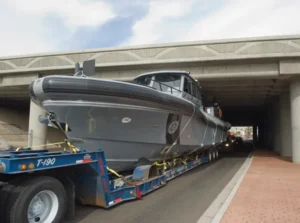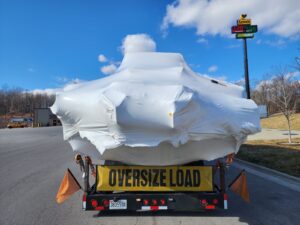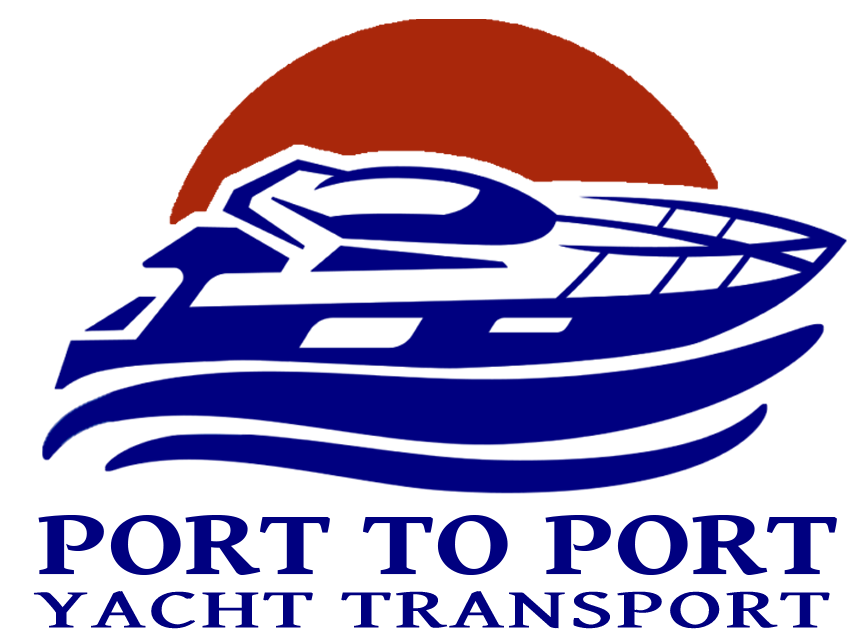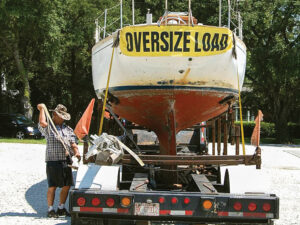 Transporting boats and yachts along the Eastern Seaboard, from the rugged coastlines of Maine to the sun-soaked beaches of Florida, presents a unique set of challenges, especially with underpasses. One of the primary concerns for boat and yacht haulers, as well as yacht owners, is the varying height restrictions of underpasses along this route. Additionally, time restrictions for transporting larger yachts also play a critical role. This article aims to provide a comprehensive overview of these height restrictions, time limitations, the differences in clearance heights from North Maine to Southern Florida, and the essential considerations for those preparing their vessels for transport.
Transporting boats and yachts along the Eastern Seaboard, from the rugged coastlines of Maine to the sun-soaked beaches of Florida, presents a unique set of challenges, especially with underpasses. One of the primary concerns for boat and yacht haulers, as well as yacht owners, is the varying height restrictions of underpasses along this route. Additionally, time restrictions for transporting larger yachts also play a critical role. This article aims to provide a comprehensive overview of these height restrictions, time limitations, the differences in clearance heights from North Maine to Southern Florida, and the essential considerations for those preparing their vessels for transport.
Table of Contents
ToggleThe Importance of Height Restrictions with Underpasses in Mind
Height restrictions are critical for ensuring the safe passage of vehicles transporting oversized loads, including boats and yachts., through underpasses.These restrictions are dictated by the vertical clearance of bridges, tunnels, and overpasses. For boat and yacht haulers, understanding these restrictions is essential to avoid potential hazards such as collisions, which can cause significant damage to both the transport vehicle and the vessel being transported.
Regional Variations in Underpasses Height Restrictions
Maine to New York
Starting in the north, Maine presents relatively fewer challenges in terms of height restrictions. The state’s infrastructure, particularly along major routes such as I-95, generally offers ample clearance for oversized loads. Most underpasses in Maine provide a clearance of at least 14 feet, which accommodates most standard boat trailers and yacht haulers.
As haulers move south through New Hampshire and Massachusetts, the height restrictions become more varied. In Massachusetts, especially around urban areas like Boston, there are older bridges and tunnels with clearances as low as 13 feet. This necessitates careful route planning to ensure safe passage.
New York poses additional challenges, particularly around the metropolitan area. The height restrictions can be as low as 12 feet in some areas, particularly on parkways, which are often off-limits to commercial vehicles and those hauling oversized loads. Routes such as the Long Island Expressway (I-495) and the New York State Thruway (I-87/I-90) offer better clearance, generally around 14 to 15 feet.
Mid-Atlantic States: New Jersey to Virginia
Continuing south, New Jersey’s infrastructure varies widely. The New Jersey Turnpike (I-95) provides consistent clearances around 14 feet, making it a preferred route for boat haulers. However, local roads and parkways can have significantly lower clearances, similar to New York.
In Pennsylvania, Maryland, and Delaware, the major interstates such as I-95 and I-81 generally offer sufficient clearance, typically around 14 to 15 feet. However, older local roads and some tunnels, like the Baltimore Harbor Tunnel, have lower clearances that can restrict the transport of taller vessels.
Virginia presents fewer height restriction challenges, with major routes such as I-95, I-81, and I-64 offering clearances of 14 to 15 feet. The state has made significant investments in infrastructure, ensuring that most routes can accommodate oversized loads.

The Carolinas to Florida Underpasses
North Carolina and South Carolina continue the trend of providing ample clearance on major highways. Routes such as I-95 and I-77 typically offer clearances of 14 feet or more. However, haulers should be cautious on local roads, where clearances can drop to 13 feet or lower, particularly in older, more rural areas.
Georgia’s infrastructure is similarly accommodating, with major routes such as I-95 and I-75 providing clearances of 14 feet. However, caution is advised around urban centers like Atlanta, where older infrastructure can present lower clearances.
Finally, in Florida, the major highways such as I-95, I-75, and I-10 offer consistent clearances around 14 to 15 feet. The state’s extensive highway system has been designed to accommodate the high volume of oversized loads, including boats and yachts.
Time Restrictions for Larger Yacht Transports with Underpasses and Bridges
In addition to height restrictions, time restrictions are also crucial when transporting larger yachts. These time restrictions are often implemented to reduce traffic congestion and ensure safety on busy highways. Most states enforce specific time windows during which oversized loads can be transported. These typically include:
Daylight Hours Only: Many states restrict the transport of oversized loads to daylight hours, usually from sunrise to sunset, to enhance visibility and safety.
Peak Traffic Hours: In urban areas, haulers may face restrictions during peak traffic hours, typically in the early morning and late afternoon, to minimize disruptions.
Weekends and Holidays: Some states prohibit the transport of oversized loads on weekends and holidays when traffic volume is higher.
Special Events: During major events or construction activities, additional time restrictions may be imposed.
Preparing for Transport Considering Underpasses
For yacht owners and haulers, preparing a vessel for transport involves several key steps:
Measuring the Height: Accurately measure the total height of the boat or yacht on the trailer, including any equipment or fixtures that increase the overall height.
Route Planning: Utilize online resources and transport companies to plan a route that avoids low-clearance underpasses. Specialized transport companies often have detailed maps and databases of clearance heights.
Permits and Regulations: Ensure that all necessary permits are obtained for transporting oversized loads. Regulations can vary by state, and failing to comply can result in fines or delays.
Professional Haulers: Consider hiring professional yacht transport companies that are experienced in navigating height restrictions and obtaining the necessary permits. They can provide peace of mind and ensure safe transport.
Communication: Maintain clear communication with the transport company and monitor the route for any unexpected changes or construction that might impact clearance heights.
Closing Thoughts on Underpasses
Navigating the height and time restrictions of underpasses from Maine to Florida requires careful planning and attention to detail. The variations in clearance heights, particularly in older urban areas, combined with time constraints, can present significant challenges for boat and yacht haulers. By understanding these restrictions and taking the necessary precautions, yacht owners and haulers can ensure the safe and efficient transport of their vessels along the Eastern Seaboard.
For more detailed information on state-specific regulations and restrictions, please refer to the following resources:
For additional valuable resources on transporting boats and yachts, explore these articles:
- Boat Transport 101: Preparing Your Boat for Shipping
- Tips for Safe and Efficient Yacht Transport
- Navigating State-Specific Regulations for Oversized Loads
.

